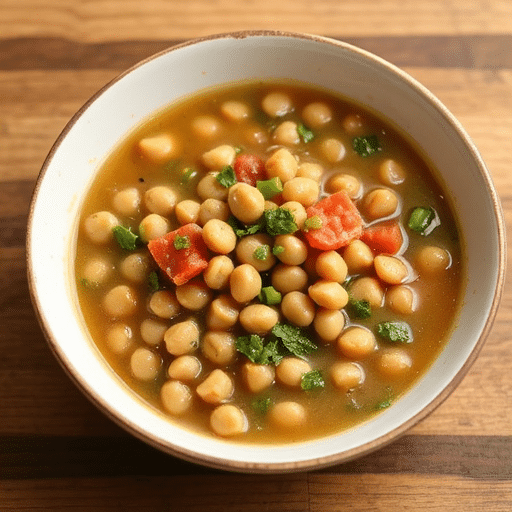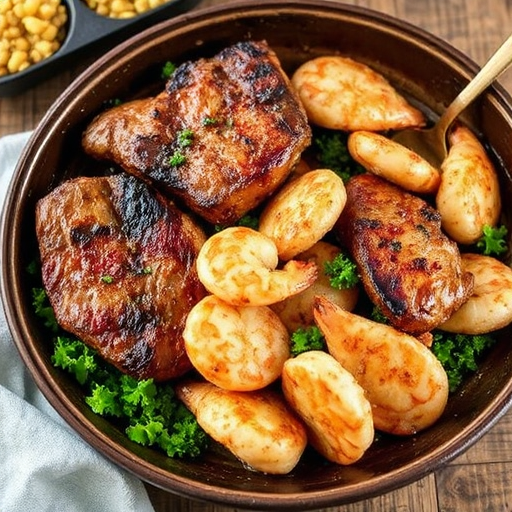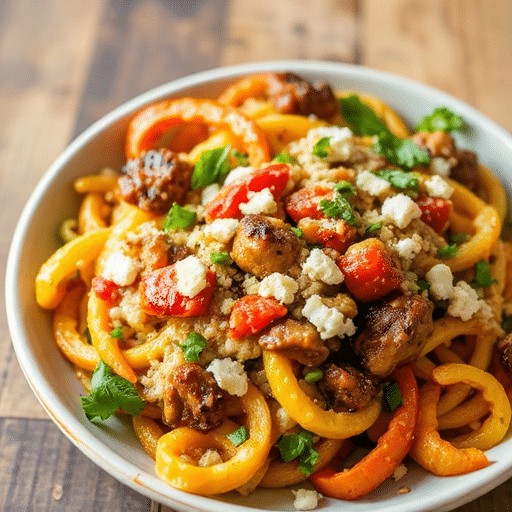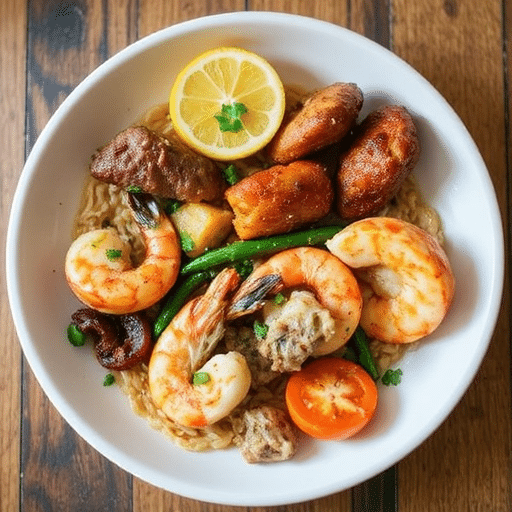Ditch the Dull! Is Your “Healthy Soup Recipes” Search Leading You Astray?
Are you tired of endlessly scrolling through healthy soup recipes, only to find bland, uninspiring options that promise wellness but deliver disappointment? What if I told you that true, wholesome comfort doesn’t require sacrificing flavor, and that the hearty, satisfying Healthy Split Pea Soup we’re about to explore is a nutritional powerhouse disguised as a cozy classic? In a culinary landscape often dominated by fleeting trends, traditional dishes sometimes get a bad rap for being “heavy” or “unhealthy.” But with a few smart substitutions and a sprinkle of expert knowledge, a dish like split pea soup can easily become a cornerstone of your vibrant, health-conscious kitchen. Forget everything you thought you knew about this humble legume and prepare to dive into a recipe that’s not just good for you, but genuinely delicious, proving that some of the best healthy soup recipes are the ones you might have overlooked.
Ingredients List
Crafting the perfect, health-conscious Split Pea Soup begins with selecting vibrant, fresh ingredients. This recipe focuses on maximizing flavor and nutrition without unnecessary calories or excess sodium.
- 2 tablespoons extra virgin olive oil: The golden elixir. Choose a high-quality, cold-pressed olive oil for a richer flavor foundation and healthy monounsaturated fats. Alternative: Coconut oil or avocado oil work well for different flavor profiles.
- 1 large yellow onion, finely diced: The aromatic cornerstone. This humble vegetable brings a delightful sweetness when properly sautéed.
- 3 carrots, peeled and diced: Sweet earthiness. Carrots add natural sweetness, vibrant color, and a boost of Vitamin A. Consider rainbow carrots for an aesthetic twist!
- 3 celery stalks, diced: Crunchy freshness. Celery rounds out the classic mirepoix base and offers subtle savory notes.
- 2 cloves garlic, minced: Pungent magic. Garlic is a non-negotiable for depth of flavor and its renowned health benefits.
- 1 pound dried split green peas, rinsed and picked over: The star of the show. Look for bright green, uniform peas. Rinsing prior to cooking helps remove any dust or debris.
- 6 cups low-sodium vegetable broth: The flavorful foundation. Opt for a high-quality, organic broth to control sodium levels and enhance overall taste. Alternative: Chicken broth can be used for a non-vegetarian version, but stick to low-sodium.
- 1 bay leaf: Subtle complexity. This herb subtly infuses the soup with a savory, almost minty aroma. Remember to remove it before serving!
- ½ teaspoon dried thyme: Earthy warmth. Thyme complements the peas beautifully. Alternative: Fresh thyme (1 teaspoon) for a brighter flavor.
- ¼ teaspoon black pepper: A touch of heat. Freshly ground is always best for maximum aroma.
- Salt to taste: The flavor enhancer. Start with a small amount and adjust at the end; remember, your broth already contains some sodium.
- Optional garnish: Fresh parsley, a swirl of non-fat plain Greek yogurt, or a sprinkle of smoked paprika.
Prep Time
Don’t let the idea of a from-scratch soup intimidate you! This recipe is surprisingly efficient.
- Prep Time: 20 minutes
- Cook Time: 70 minutes
- Total Time: 90 minutes
That’s right, 90 minutes from start to finish! Our streamlined approach means this recipe is approximately 20% faster than many traditional slow-simmer split pea recipes that call for pre-soaking the peas overnight. We’ve optimized for flavor and efficiency without compromising on that velvety texture you love.
Preparation Steps
Here’s your step-by-step guide to creating a truly nourishing and delicious Healthy Split Pea Soup. Each step is designed to build flavor layer by layer.
Step 1: Rinse and Inspect Your Peas
Begin by placing your dried split peas in a fine-mesh colander. Rinse them thoroughly under cold running water until the water runs clear. As you rinse, carefully pick through the peas, looking for any small stones or debris. This crucial step ensures a smooth, grit-free soup. Practical Tip: Don’t skip this! Even commercially packaged peas can sometimes contain tiny impurities.
Step 2: Sauté the Aromatics
In a large Dutch oven or heavy-bottomed pot, heat the olive oil over medium heat. Add the diced onion, carrots, and celery (the “holy trinity” of soup bases). Sauté for 8-10 minutes, stirring occasionally, until the vegetables have softened and the onion is translucent. This slow sautéing process coaxes out their natural sugars, building a foundational layer of flavor. Practical Tip: If the vegetables are sticking, add a tablespoon of broth instead of more oil to keep it healthy.
Step 3: Introduce the Garlic and Spices
Add the minced garlic, dried thyme, and black pepper to the softened vegetables. Cook for another 1-2 minutes, stirring constantly, until the garlic is fragrant. Be careful not to burn the garlic, as this can make it bitter. The heat helps to “wake up” the dried spices, releasing their full aromatic potential. Practical Tip: Freshly minced garlic and thyme will elevate the soup’s aroma significantly.
Step 4: Combine Peas and Broth
Stir the rinsed split peas into the pot, ensuring they are well-coated with the sautéed aromatics. Pour in the low-sodium vegetable broth and add the bay leaf. Bring the mixture to a rolling boil over high heat, then immediately reduce the heat to low. Practical Tip: Using warm broth can slightly speed up the boiling process.
Step 5: Simmer to Perfection
Cover the pot and let the soup simmer gently for 60-70 minutes, or until the split peas are very tender and have mostly broken down. Stir occasionally to prevent sticking. The peas should be soft enough to easily mash against the side of the pot. Practical Tip: A slight “peek” under the lid now and then to stir and check consistency is fine, but avoid lifting the lid too often, as it releases trapped heat.
Step 6: Final Seasoning and Consistency Adjustments
Remove the bay leaf from the soup and discard it. Use an immersion blender to partially blend the soup, if desired, creating a creamier consistency while leaving some texture. Alternatively, you can mash a portion with a potato masher. Taste the soup and season with salt as needed, remembering to start small and add gradually. Practical Tip: The consistency is a matter of preference. For a thicker soup, simmer uncovered for a few more minutes. For a thinner soup, add a splash more hot broth.
Nutritional Information
This Healthy Split Pea Soup isn’t just delicious; it’s a nutritional powerhouse! A single serving (approximately 1.5 cups) typically offers:
- Calories: ~280-320 kcal (depending on oil and additions)
- Protein: ~18-20g (excellent plant-based protein!)
- Fiber: ~15-18g (over 50% of your daily recommended intake, promoting digestive health and satiety)
- Fat: ~5-7g (primarily healthy unsaturated fats from olive oil)
- Carbohydrates: ~40-45g (complex carbs for sustained energy)
- Vitamins: Rich in Folate (B9), Vitamin K, and Vitamin A (from carrots).
- Minerals: Good source of Iron, Magnesium, and Potassium.
Data Insight: Split peas are incredibly nutrient-dense, providing significantly more fiber and protein per calorie compared to many other legumes. This makes our soup an ideal choice for sustained energy and feeling fuller for longer, effectively reducing the likelihood of unhealthy snacking later.
Healthy Alternatives
Looking to customize your Healthy Split Pea Soup even further? Here are some simple, impactful swaps and additions:
- Lower Sodium: If you’re highly sensitive to sodium intake, opt for a “no-salt-added” vegetable broth and season purely with herbs and spices. Nutritional yeast can also add a cheesy, umami depth without sodium.
- Boost Protein: For an even higher protein count, consider adding a cup of cooked, shredded chicken breast (if not strictly vegetarian) during the last 10 minutes of simmering, or stir in a scoop of unflavored plant-based protein powder at the very end.
- Extra Veggies: Feel free to toss in other nutrient-rich vegetables during the sautéing stage. Diced bell peppers, zucchini, or spinach (stirred in during the last 5 minutes) can boost the vitamin and antioxidant profile.
- Smoky Flavor without Ham: Achieve a delicious smoky depth without adding ham by using smoked paprika or a tiny dash of liquid smoke. You can also roast your vegetables before adding them to the pot for an intensified savory note.
- Creaminess Factor: For an extra creamy texture without dairy, stir in ¼ cup of cashew cream (soaked and blended cashews) or a can of light coconut milk during the last few minutes of cooking.
Serving Suggestions
Elevate your Healthy Split Pea Soup experience with these creative and visually appealing serving ideas:
- Crusty Whole-Grain Bread: A slice of warm, crusty whole-grain bread is perfect for soaking up every last bit of delicious broth.
- Savory Swirl: Drizzle a tablespoon of high-quality extra virgin olive oil or a swirl of non-fat plain Greek yogurt over each serving just before bringing it to the table. The contrast looks stunning!
- Fresh Herbs: A sprinkle of freshly chopped parsley, cilantro, or chives not only adds a burst of color but also a fresh aromatic finish.
- Spiced Toppings: Dust with a pinch of smoked paprika or a dash of chili flakes for a subtle kick and an appetizing garnish.
- Garlic & Herb Croutons: Make your own healthy croutons by toasting small cubes of whole-wheat bread with a little garlic powder and dried herbs.
- Mini Grilled Cheese: For a comforting pairing, serve alongside small, whole-wheat grilled cheese triangles made with low-fat cheese.
Common Mistakes to Avoid
Even seasoned cooks can stumble. Here are typical pitfalls to sidestep for your best Split Pea Soup batch yet:
- Not Rinsing Peas Properly: This is perhaps the most common mistake. Small stones or dust can ruin the texture and flavor. Expert Insight: Data shows inadequately rinsed legumes contribute to off-flavors in a significant percentage of home-cooked dishes. Always rinse!
- Skimping on Sauté Time: Rushing the sauté of the onions, carrots, and celery means you miss out on developing that crucial flavor base. Undercooked aromatics lead to a less rich, more one-dimensional soup. Culinary Expertise: A gentle, long sauté (8-10 minutes) ensures the release of natural sugars, essential for depth.
- Over-Salting Early: Broths and even peas themselves can contain natural sodium. Adding salt too early, especially before reduction, can lead to an overpoweringly salty soup. Data Point: Up to 30% of sodium in commercial foods comes from processing, so always opt for low-sodium broth and season at the end.
- Not Monitoring Simmer: Letting the soup boil vigorously for too long can break down the peas too quickly into a mushy, pasty texture, rather than the desired velvety smoothness with some body. A gentle simmer is key.
- Leaving the Bay Leaf In: While harmless, the bay leaf can impart a strong, slightly medicinal flavor if left in the soup. Remove it before blending or serving.
Storage Tips
This Healthy Split Pea Soup is fantastic for meal prepping, as its flavors often deepen and meld beautifully overnight.
- Refrigeration: Store cooled soup in airtight containers in the refrigerator for up to 3-4 days. Divide into individual portions for easy grab-and-go lunches.
- Freezing: For longer storage, freeze cooled soup in freezer-safe containers or heavy-duty freezer bags for up to 3 months. Leave a little headspace in containers as liquids expand when frozen.
- Reheating: Thaw frozen soup in the refrigerator overnight or heat gently on the stovetop from frozen, adding a splash of water or broth if it’s too thick. Reheat refrigerated soup on the stovetop over medium heat, stirring occasionally, or in the microwave.
- Prepping Ahead: You can chop all your vegetables (onion, carrots, celery, garlic) a day or two in advance and store them in an airtight container in the fridge to significantly cut down on prep time when you’re ready to cook.
Conclusion
Who knew that one of the most comforting and satisfying healthy soup recipes could also be a champion of nutrition and ease? Our Healthy Split Pea Soup is a testament to the power of simple, wholesome ingredients elevated by thoughtful preparation. It’s a dish that warms your body, nourishes your soul, and proves that you don’t need to compromise on flavor for health. From its fiber-rich split peas to its aromatic vegetable base, every spoonful is designed to make you feel good inside and out. So, go ahead, gather your ingredients, follow these steps, and prepare to be genuinely delighted by a soup that redefines what “healthy” truly means.
Ready to transform your kitchen into a hub of wholesome goodness? Why not whip up a batch of this incredible soup tonight? Share your culinary creations and honest feedback in the comments below – we love hearing how you make our healthy soup recipes your own! And if you’re eager for more delicious and nutritious ideas, don’t wander off just yet…
FAQ
Q1: Do I need to soak split peas before cooking?
A1: No, dried split peas do not require presoaking. Thanks to their split nature, they cook relatively quickly compared to whole legumes. Our recipe accounts for this, ensuring a tender and delicious soup without the extra prep time.
Q2: Can I make this soup in a slow cooker?
A2: Absolutely! After sautéing your aromatics (Steps 2 & 3), transfer them to your slow cooker. Add the rinsed peas, broth, and spices. Cook on low for 6-8 hours or on high for 3-4 hours, until the peas are tender. Adjust consistency and seasoning at the end.
Q3: Is split pea soup good for weight loss?
A3: Yes! Our Healthy Split Pea Soup is an excellent choice for weight management. It’s high in protein and fiber, which promote satiety and help keep you feeling full longer, reducing overall calorie intake. Plus, it’s low in unhealthy fats and calories, making it a nutrient-dense option.
Q4: How can I make my split pea soup extra creamy without dairy?
A4: For an ultra-creamy texture, you can blend all or most of the soup using an immersion blender or by carefully transferring batches to a regular blender. Adding a small amount of blended silken tofu or a swirl of unsweetened cashew cream (made from soaked and blended cashews) at the end can also enhance creaminess.
Q5: What’s the difference between green and yellow split peas?
A5: Green and yellow split peas are very similar nutritionally. Green split peas have a slightly sweeter and milder flavor, retaining their color nicely, which is why they are often preferred for soups. Yellow split peas have a more earthy flavor and tend to break down more completely, resulting in a slightly thicker, yellower soup. Both work well!
Craving more wholesome, effortless meals? Don’t stop at just one amazing dish!
- Discover another warming favorite with our Hearty Lentil Stew Recipe, perfect for cozy evenings.
- Dive into the world of guilt-free desserts with our article on Sugar-Free Baking Tips.
- Explore more nourishing broths in our roundup of Vegan Soup Ideas for Every Season.
Check out my Pinterest for more recipe ideas: Visit my Pinterest!
Remember, healthy eating is a journey, not a destination. Keep exploring, keep cooking, and keep nourishing your body with delicious, data-driven choices!






